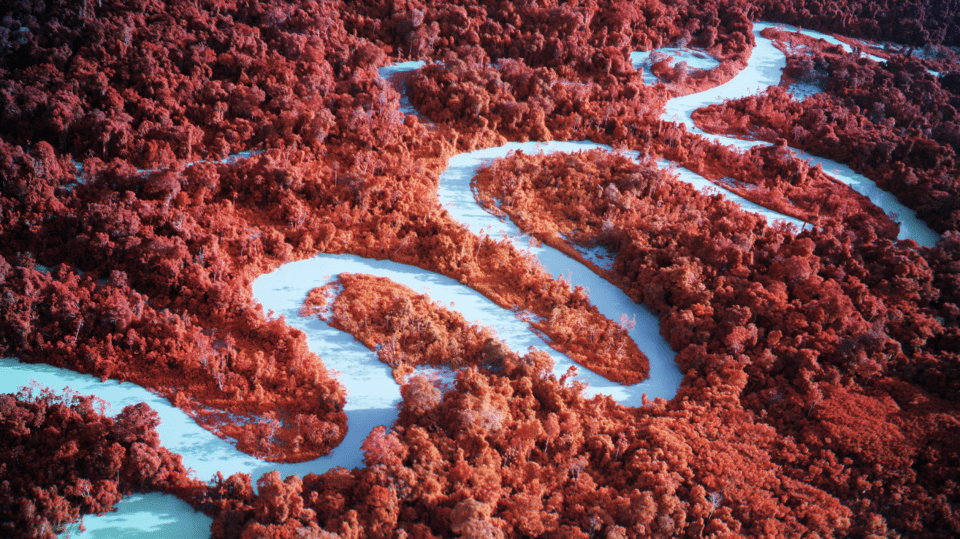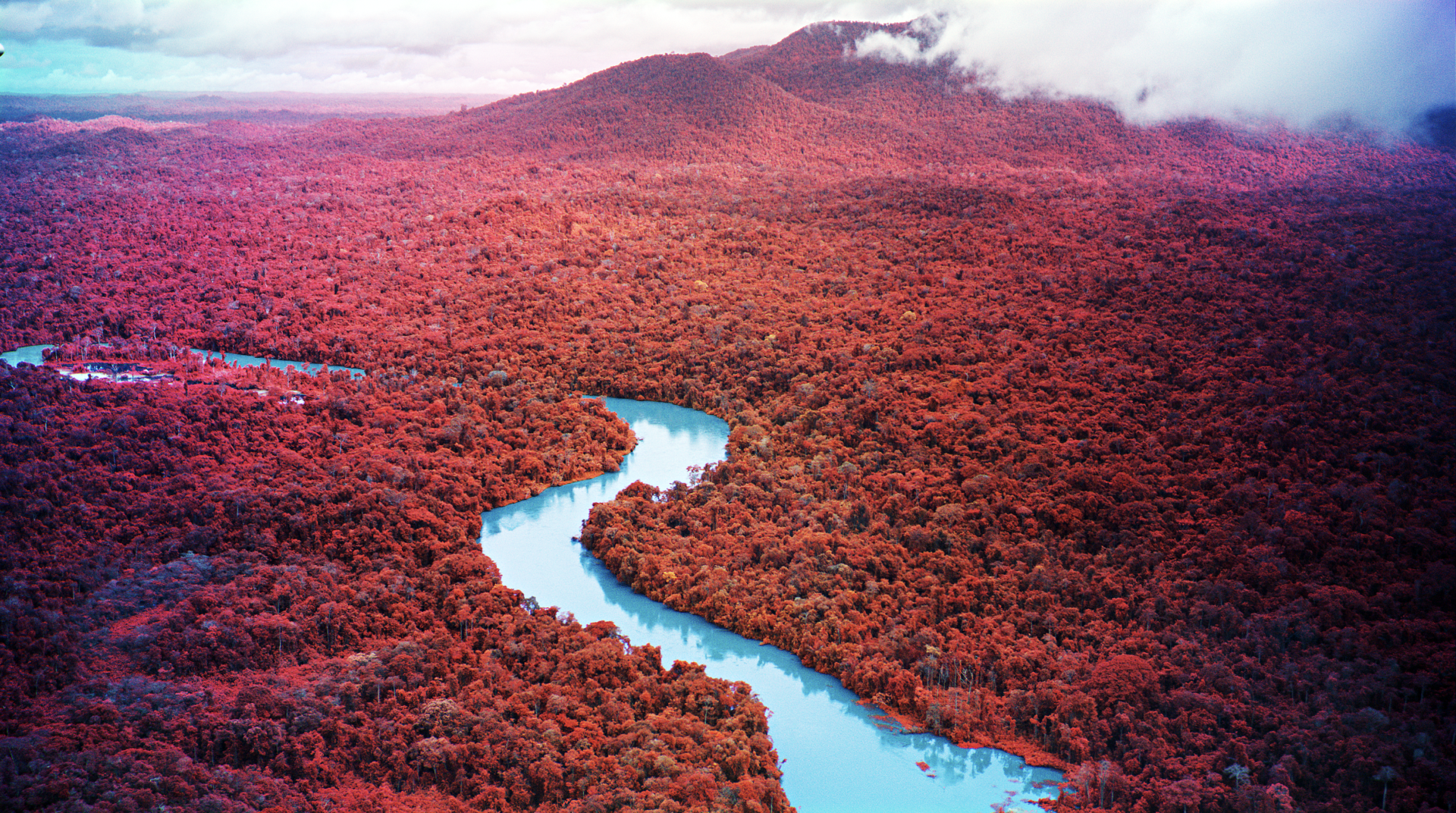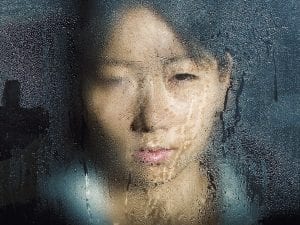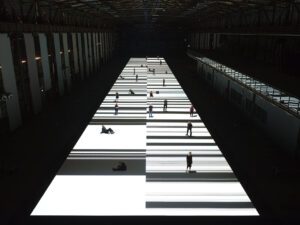American physicist Robert Williams Wood published the first infrared images in 1910. The technique registers light that is invisible to the human eye, creating a dreamlike image that distorts colours. The tool was used as part of aerial imaging during WWI, as the pictures could pierce toxic gases and inform decision-making, becoming a vital resource in modern warfare.
Irish artist Richard Mosse (b. 1980) pioneered the artistic use of infrared photography in the series Infra (2012), which depicted Democratic Republic of the Congo’s civil war. In the images, camouflaging greens are transformed into vivid lavender and crimson. Mosse photographed the topographies marred by the fighting, as well as rebel groups and communities caught up in the conflict. Infrared, as a technique, has been harnessed by influential names like Claudia Andujar, as well as a new generation of lens-based creatives, such as Kate Ballis and Paolo Pettigiani.

In a new exhibition at MMoCA, Mosse harnesses the familiar technique for a new purpose. The impact of humans on the flora of the Amazon is brought to the fore using multispectral aerial cameras, ultraviolet botanical studies and heat sensitive analogue film. At the heart of the display is Broken Spectre, a 74-minute film that shows cinematic infrared scenes that track illegal mining, logging, industrial agriculture and Indigenous activism. Behaviours that are usually shielded by canopies of trees are brought to attention. Mosse’s photos reveal ecological devastation that is too vast to comprehend, highlighting the interconnectedness of seemingly insignificant actions and decisions.
Broken Spectre | MMoCA, Madison | Until 16 February
Image credits:
1. Richard Mosse, Still from Broken Spectre, Yanomami Territory I, River Uraricoera, Roraima, multispectral image from helicopter, 2022. © Richard Mosse. Courtesy of the artist nd Jack Shainman Gallery, New York
2.Richard Mosse, Still from Broken Spectre, Yanomami Territory I, River Uraricoera, Roraima, multispectral image from helicopter, 2022. © Richard Mosse. Courtesy of the artist nd Jack Shainman Gallery, New York





